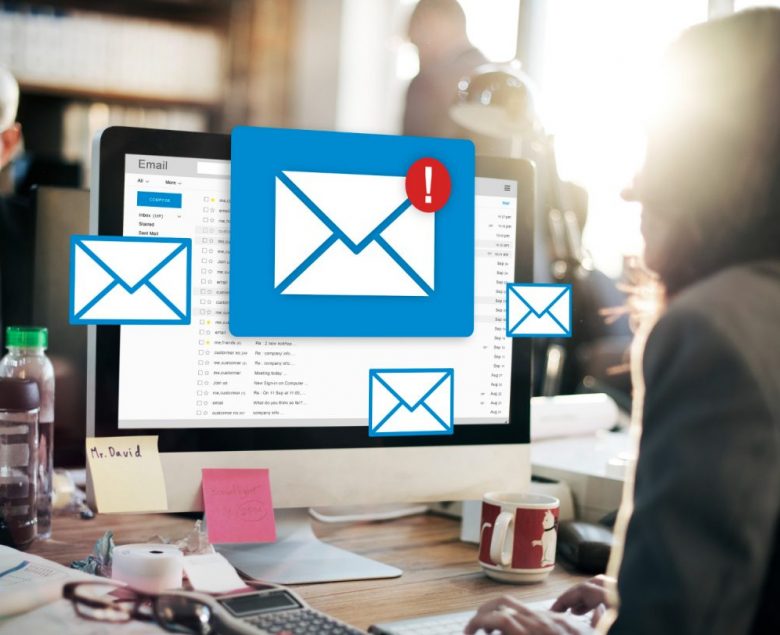Email security focuses on preventing malicious activity such as phishing attacks, ransomware, crypto-jacking scripts, and privilege escalation exploits. Most organizations have a formal email policy that outlines employee responsibilities, brings-your-own-device guidelines, attachment guidance, and other rules.
Less well-known are three mutually reinforcing email authentication protocols (SPF, DKIM, and DMARC). These solutions protect from spoofing attacks.
Authentication
Email authentication protects a business’s reputation, brand, and customers from phishing attacks. Without it, cybercriminals can forge emails to appear as if they are coming from you or your company, which can deceive recipients into clicking on links or downloading attachments that contain malware.
Email security protocols like SPF, DKIM, and DMARC prevent this by authenticating the sender’s identity and verifying that the message has not been modified in transit. These protocols also help to reduce the volume of spoofing and phishing emails, contributing to a healthier email environment within organizations.
Authentication methods like SPF and DKIM allow email servers to check an email sender’s domain name server (DNS) to see which IP addresses are authorized to use the domain. Emails that fail this check are automatically rejected, quarantined, or sent to spam, allowing email filters to spot and block malicious messages quickly.
Authenticating email is important to business cybersecurity because it protects users from unauthorized access to confidential information, such as employee and client information. Implementing strong password requirements, multifactor authentication, and secure email gateways can all increase the effectiveness of an organization’s email security protocol. Additionally, training employees to recognize suspicious emails and report them promptly can help to prevent cyberattacks. These policies should be outlined in clear email security policies and communicated to all employees, including those not working directly on e-mail-related projects.
MTA-STS
Email security protocols provide a solid foundation for businesses to safeguard their information and protect their employees from cyber threats. In addition to these protocols, companies should integrate data protection solutions that prevent users from sending sensitive information outside the organization and implement phishing prevention tools to mitigate phishing attacks. In addition, they should train their employees to spot suspicious emails and secure personal information.
A Man-in-the-Middle attack can degrade an encrypted SMTP connection to an unencrypted one by tampering with the STARTTLS command sent by the incoming server. This allows attackers to eavesdrop on email communications and obtain confidential data, including company databases and login credentials. MTA-STS helps to mitigate this threat by ensuring that TLS is always used when communicating with your SMTP servers. This is achieved by publishing an MTA-STS policy on an HTTPS-enabled web server and a DNS TXT record to tell senders that your domain requires a valid TLS certificate to communicate with it.
Deploying MTA-STS is fairly easy but requires some maintenance and reporting overhead. As the MTA-STS protocol has a lower overhead than SPF, DKIM, and DMARC, it is an excellent choice for organizations that require robust email security. The EFF recently launched a new initiative called STARTTLS Everywhere, which will also improve the security of SMTP infrastructure by hosting a preload list similar to what Google is doing with HTTP Strict Transport Security (HSTS). MTA-STS will likely likely be widely adopted as the standard for email infrastructure in the future.
Encryption
Email is vulnerable to attacks that can steal sensitive data and cause financial losses. Attackers often use emails as entry points into corporate networks and systems, preying on employee-related vulnerabilities to gain access to company information or customer data. The latest email security protocols are essential in protecting businesses against these threats.
An effective email security gateway safeguards an organization’s stream of email to block unwanted inbound messages like spam, phishing, and malware while analyzing outgoing emails to prevent sensitive data from leaving the network. This solution should also include advanced email encryption to protect messages in transit and at rest, preventing unauthorized parties from intercepting or reading content.
S/MIME, PGP, and digital certificates are all email security solutions that protect sensitive content by encrypting emails and authenticating them with a public key. These solutions enable employees to share encrypted documents with colleagues and customers without risk of interception or corruption.
Implementing DMARC, DKIM, and SPF also helps prevent spoofing attacks by reporting forged domain names to email providers. This helps reduce phishing and spoofing, which can hurt the reputation of a business domain and lead to higher spam volume in the inbox. Ensuring employees only access email on work-approved devices is another way to mitigate email security risks.
Reputation
Email is an essential communication tool in the workplace, but it poses significant security risks if not implemented with the right technologies. Email is a convenient channel for malicious actors to launch cyberattacks and access information networks. Emails can contain a wealth of information, including business processes, financial transactions, and employee records. These vulnerabilities can lead to data breaches and other threats without the right protections in place.
Email security protocols like DKIM and SPF protect businesses by guaranteeing the legitimacy of their email sender. Combined with DMARC, these protocols ensure that mailbox providers recognize and trust emails from a company’s domain. The result is that fewer spam emails make their way into recipients’ inboxes, and the ones that do are more likely to be treated as legitimate.
In addition to implementing these tools, a business should develop a comprehensive email policy that includes a method for employees and users to acknowledge they have read and agreed to email security policy usage guidelines. This typically comes as a required signature at the end of the document and should be updated every time the policy changes.
A company’s reputation is its brand identity. It results from what consumers, employees, and partners think about it. A strong reputation is a critical component of a successful business, and it can be affected by many factors, including the quality of its products or services and how it treats its customers.











Pingback: The Importance of Implementing Email Security Protocols in Corporate Environments – Austin Rotter